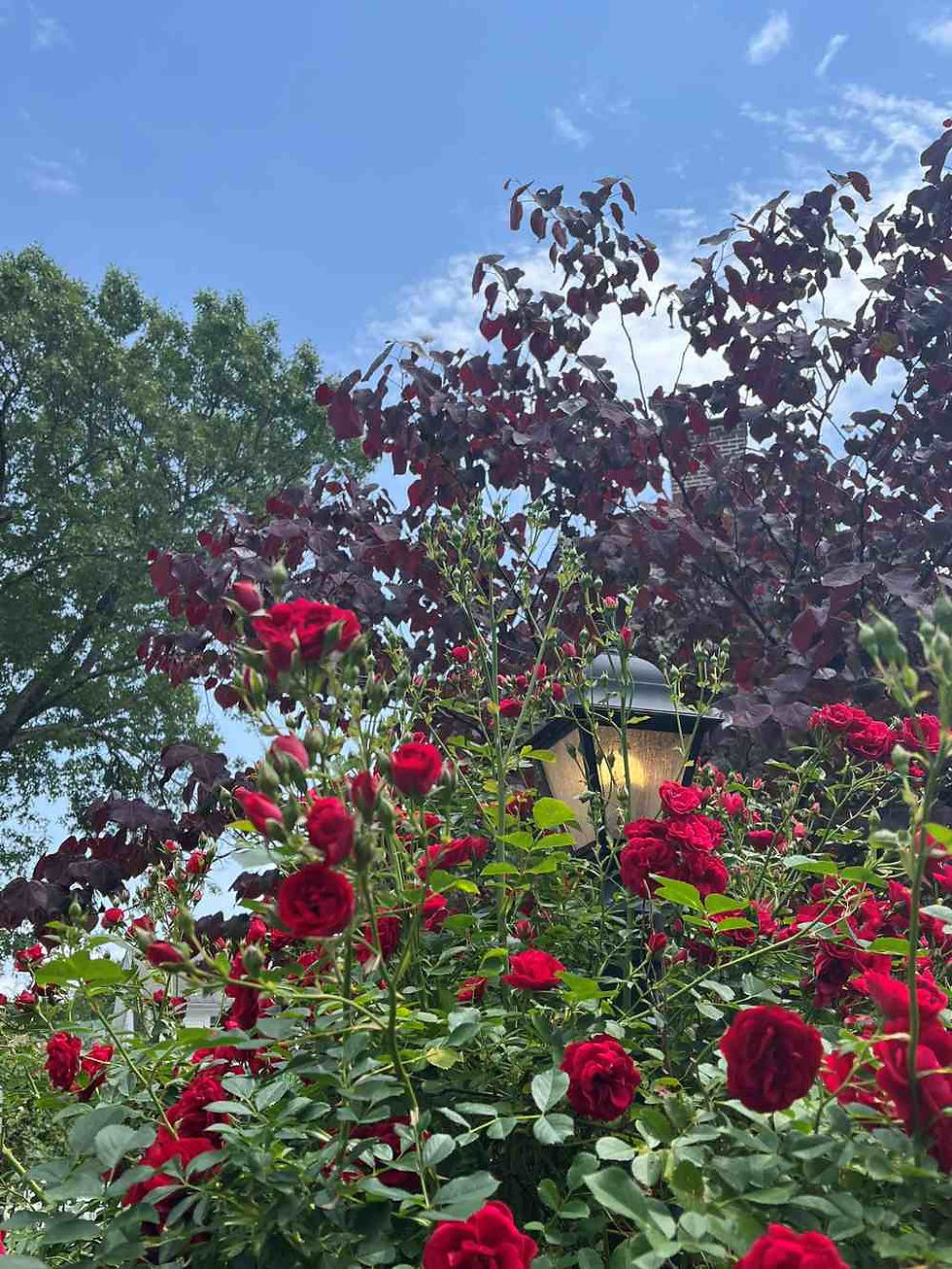Learning how to paint: Ignoring the details to see the bigger picture
- LaCalaveraCat
- Mar 5, 2023
- 3 min read

My forays into oil painting have been puttering along in fits and starts. At first, I thought I couldn’t get started with oil painting because I lived in a small house with no well-ventilated space for all the toxic fumes from the turpentine and paint thinners I was sure I was going to have to use. But, as I always do when trying to teach myself something, I did an Internet search on non-toxic oil paints and came up with water-soluble oils. What is this magical substance? Let’s go back a few steps to see the difference between this and other mediums.
Watercolors and gouache paints can both be mixed with and reactivated with water. Watercolor is the transparent medium, and gouache is more opaque. Watercolor being the most transparent cannot really be painted over with more watercolor -- you will just see more washes and transparent layers being built up over each other, building nice new shades and lovely transparencies. You can paint over gouache, but because it can be re-activate with water and wet paints, you may end up with muddy colors if you reactivate the bottom layers too much and you aren’t careful with the colors you are mixing.
Acrylic paint can be thinned with water, but once it dries, which happens quickly, it can no longer be reactivated with water. This means that you can easily paint over the bottom layers. However, because it dries so quickly, you must work quickly if you want to blend still-wet layers.
Oil paints are not water-based. As the name implies, they are oil-based, and so rather than drying, the paints oxidize. So while water-based mediums dry when the water in them evaporates, oil paints must actually undergo a chemical reaction with the air before they harden. This means that they take much longer to dry, leading to malleable paints that can make for much easier blending. Because they are oil-based, and we all know that oil and water don’t mix, you can’t use water to thin the paint or to wash out paint from your brushes. Hence the need for harsh paint thinners for cleaning and to thin your paints. These paint thinners contain volatile substances that can be very stinky, toxic, and hard to breathe, so you need a large, well-ventilated place to paint.
Through the magic of chemistry, chemists have monkeyed with the actual molecules of oil paints to create an oil paint that can actually mix with water. It does not dry nearly as fast as acrylic paints and you can easily clean your brushes and palettes with water. I am currently working with Windsor Newton Artisan Water-Mixable oil paints.
I have loved working with these water-mixable oils, and I am teaching myself how to mix colors and create portraits with these paints. For this current self-portrait, I have been getting more comfortable with my paints and color palette. This is a work in progress, of course, and I probably have several hours of work left to do. I had been getting caught up in the details, as it is so easy to do, before I realized that my eyes were crooked and not aligned properly. Ugh. However, the beauty of oil paints is that it is quite easy to paint over the offending eye and plan out how I was going to get that eye into alignment. This time around, instead of outlining the outside of the eye, I’m going to try to paint the larger shadows and shapes first and then start to move into the details.
Here are the colors that I have used so far: burnt sienna underpainting, yellow ochre and white for the dress top (there will eventually be some type of black lace treatment on top), a mixture of cadmium medium yellow, permanent alizarin crimson, yellow ochre, and white for the skin (with ultramarine blue and burnt umber mixed into the combo for the shadows). I’m using alizarin crimson and ultramarine for the glasses and burnt umber and ultramarine blue for the hair.
At some point, I hope to fix my nose and then think about the background. I think I’m getting better at painting the larger shapes and planes, but I still get caught up in the details. If I find myself looking for smaller and smaller brushes, I pause and think, OK, is the shape and are the proportions right? If not, let’s go back to the larger brushes first.
The details are always fun, which is why we rush to them (oh, I can’t wait to get to the point when I can paint in the white highlights!). But you have to get the larger shapes and proportions right first.




Comments